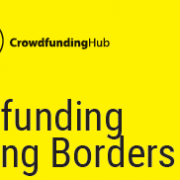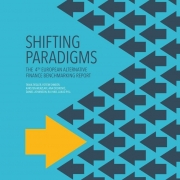Current State of Crowdfunding in Finland 2016
An overview

Inhabitants: 5,5 million, GDP (per capita: $42,2599 (Source: Wikipedia; Image Credit: NuclearVacuum)
As in every other country, in Finland crowdfunding is an amoeba-like creature without a clear definition. Although not fully developed, the market covers donation and rewards-based, as well as lending and investment-based crowdfunding. This makes it difficult for the general public to make a distinction between donations and investments, posing thus a challenge on the financial markets player. Legal status on investment-based crowdfunding is not clear either. A law on investment-based crowdfunding (equity and debt) is being prepared and is likely to enter into force in July 2016.
Volumes
There is little data available about the crowdfunding industry in Finland.
On the platform of Invesdor, equity based crowdfunding, €7 million was raised in 2015. A quadrupling since the volume in 2014 was only €1,4 million.
Local platforms
Invesdor.com (equity and debt) is a Helsinki-based fintech platforms that operates across the European Economic Area.
FellowFinance.fi is the biggest marketplace lending platform in Finland. Founded in 2013, it offers high-quality and secure online marketplace services in Europe.
Vauraus.fi (equity and debt) was launched in 2011.
Mesenaatti.me was launched in 2012 as a reward and donation based crowdfunding.
Foreign Platforms
Kickstarter and Indiegogo.
FundedByMe (Sweden) focuses on equity-based crowdfunding and P2P consumer lending.
Regulations
So far there is no specific law on crowdfunding, but this is about to change. A law on investment-based crowdfunding is under way and likely to enter into force in late 2016. The industry is still governed by several laws: Companies Act, Securities Markets Act, Act on Investment Firms, Act on Credit Institutions. In case of donation-based crowdfunding, a very strict Act on Fundraising applies.
The current regulatory status is both aiding and curtailing the industry: The players having opted for a MiFID license are heavily regulated, while others are not. Investors are probably unable to figure out the difference and the effect of that difference on investor protection.
Bringing together parties to a business transaction related to a financial instrument in a manner that enables execution of a transaction between the parties has been interpreted as transmission of client orders under MiFID by the Finnish Financial Supervisory Authority. Acting as a subscription spot, i.e. merely selling equity or bond issue, thus also constitutes transmission of orders, as the subscriptions are further transmitted to the company raising funding. According to this interpretation, investment-based crowdfunding platforms need a MiFID license.
Both public and private limited companies can raise money from the public through crowdfunding. An issue below 2,5 million euros does not require a prospectus.
Lending-based crowdfunding does not normally require credit institution authorisation, nor is it subject to supervision. If the service provider receives repayable funds and grants credit or provides other financing from its own balance sheet, the activity needs authorisation and is subject to supervision.
Banks
Banks’ attitude towards lending and investment-based crowdfunding has changed dramatically within a few years. First they were contemptuous. Then they required level playing field. Now the attitude is more of a cooperative kind, disrupt or be disrupted. Banks have realized that not only is crowdfunding a serious business but also a threat to the conventional financial services business.
Our expert

‘You miss 100% of shots you did not make’ – Wayne Gretzky
The Current State of Crowdfunding in Finland is made possible by the contribution of Johanna Palin
What is the potential of crowdfunding in your country?
The full potential of crowdfunding is yet to be unleashed, but lending and investment-based crowdfunding have established their status as a means of funding for companies. A company doing a crowdfunding round is no longer news.
What are the biggest challenges?
Because the concept of crowdfunding is so wide, it might be difficult for the general public to take the lending and investment-based crowdfunding seriously. Also, there may not be common rules even within one sub-category of crowdfunding. For example, in investment-based crowdfunding, some of the players have opted for a MiFID license, while others have not. Industry is also very vulnerable at this fledgling stage: A crowdfunding scandal would tarnish the brand of the whole industry and even the regulated operators.
What is the future holding for Finland?
Crowdfunding has solidified its position as a means of funding and investing in Finland. We are likely to see a big increase in the volumes in the next few years, compared to for example business angel and venture capital funding, or bank lending. The upcoming law on crowdfunding will make the legal status more clear for those actors not holding a MiFID license.









